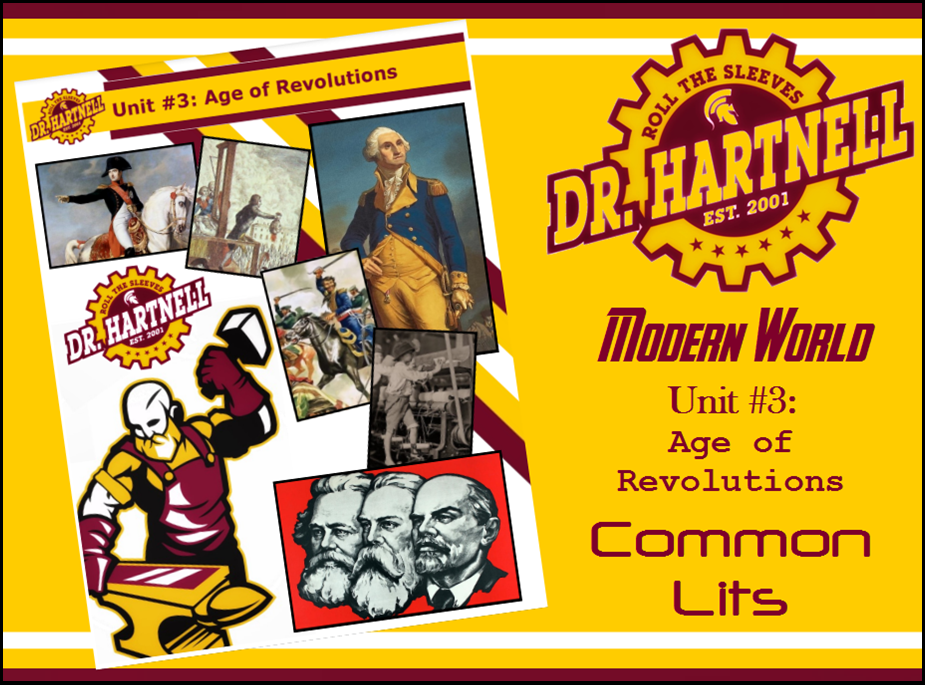Political Society
John Locke (1632-1704) was an English philosopher. His writings influenced American revolutionaries and his ideas are reflected in the United States Declaration of Independence.
CLICK HERE TO READ THIS ARTICLE.
John Locke (1632-1704) was an English philosopher. His writings influenced American revolutionaries and his ideas are reflected in the United States Declaration of Independence.
CLICK HERE TO READ THIS ARTICLE.
Leviathan & The Social Contract
Thomas Hobbes (1588-1679) was an English political philosopher. His 1651 book, Leviathan, established the theory of the "Social Contract", which establishes the idea that man benefits from a common rule of law.
CLICK HERE TO READ THIS ARTICLE.
Thomas Hobbes (1588-1679) was an English political philosopher. His 1651 book, Leviathan, established the theory of the "Social Contract", which establishes the idea that man benefits from a common rule of law.
CLICK HERE TO READ THIS ARTICLE.
Spirit of Laws
Charles-Louis de Secondat, Baron de La Brède et de Montesquieu (1689-1755) was a French lawyer and political philosopher during the Age of Enlightenment. His writing has influenced constitutions around the world with his emphasis on the need for separation of powers in government. In these excerpts from his political work Spirit of Laws, Montesquieu discusses slavery and equality. His country, France, would abolish slavery in all its territory and colonies in 1794.
CLICK HERE TO READ THIS ARTICLE.
Charles-Louis de Secondat, Baron de La Brède et de Montesquieu (1689-1755) was a French lawyer and political philosopher during the Age of Enlightenment. His writing has influenced constitutions around the world with his emphasis on the need for separation of powers in government. In these excerpts from his political work Spirit of Laws, Montesquieu discusses slavery and equality. His country, France, would abolish slavery in all its territory and colonies in 1794.
CLICK HERE TO READ THIS ARTICLE.
A Brit's View of American Independence
This article discusses the ratification of the Declaration of Independence, a historical document written by America's Founding Fathers in 1776 that declared America's freedom from Britain. The article is written from the perspective of a fictional Brit.
CLICK HERE TO READ THIS ARTICLE.
This article discusses the ratification of the Declaration of Independence, a historical document written by America's Founding Fathers in 1776 that declared America's freedom from Britain. The article is written from the perspective of a fictional Brit.
CLICK HERE TO READ THIS ARTICLE.
Why Americans Are So Restless
Alexis de Tocqueville (1805-1859) was a French diplomat, political scientist, and historian. Tocqueville is best known for Democracy in America, which was published in two volumes in 1835 and 1840. In the following excerpt from the book, Tocqueville discusses the effectiveness of America's democracy.
CLICK HERE TO READ THIS ARTICLE.
Alexis de Tocqueville (1805-1859) was a French diplomat, political scientist, and historian. Tocqueville is best known for Democracy in America, which was published in two volumes in 1835 and 1840. In the following excerpt from the book, Tocqueville discusses the effectiveness of America's democracy.
CLICK HERE TO READ THIS ARTICLE.
The Reign of Terror
The French Revolution was a time of drastic social and political change in France that lasted from 1789-1799. During the Revolution, a period known as the Reign of Terror took place from 1793-1794. This article discusses what contributed to the Reign of Terror and how it impacted France.
CLICK HERE TO READ THIS ARTICLE.
The French Revolution was a time of drastic social and political change in France that lasted from 1789-1799. During the Revolution, a period known as the Reign of Terror took place from 1793-1794. This article discusses what contributed to the Reign of Terror and how it impacted France.
CLICK HERE TO READ THIS ARTICLE.
Napoleon Bonaparte
In the turmoil following the French Revolution, a low-ranking noble and military general rose to power, eventually becoming a major figure in early modern European history. This article discusses the life and legacy of Napoleon Bonaparte, the French dictator and emperor.
CLICK HERE TO READ THIS ARTICLE.
In the turmoil following the French Revolution, a low-ranking noble and military general rose to power, eventually becoming a major figure in early modern European history. This article discusses the life and legacy of Napoleon Bonaparte, the French dictator and emperor.
CLICK HERE TO READ THIS ARTICLE.
How Haiti Saved the United States
In the late 18th Century, Toussaint L’Ouverture (1743-1803) led a slave uprising, also known as the Haitian Revolution, that liberated the former French colony and created the Republic of Haiti.
CLICK HERE TO READ THIS ARTICLE.
In the late 18th Century, Toussaint L’Ouverture (1743-1803) led a slave uprising, also known as the Haitian Revolution, that liberated the former French colony and created the Republic of Haiti.
CLICK HERE TO READ THIS ARTICLE.
Our America
José Martí (1853-1895) was a poet, essayist, journalist, and political theorist who wrote about the newly independent nations that arose as a result of the Latin American Wars of Independence in the late 18th and early 19th centuries. He is considered a Cuban national hero and an important figure in Latin American literature. In this excerpt from Martí's essay "Our America", he discusses the evolution of leadership in Latin American countries and his hopes for the future. Written originally in Spanish, the essay uses the word "America" to refer to all of the Latin American nations.
CLICK HERE TO READ THIS ARTICLE.
José Martí (1853-1895) was a poet, essayist, journalist, and political theorist who wrote about the newly independent nations that arose as a result of the Latin American Wars of Independence in the late 18th and early 19th centuries. He is considered a Cuban national hero and an important figure in Latin American literature. In this excerpt from Martí's essay "Our America", he discusses the evolution of leadership in Latin American countries and his hopes for the future. Written originally in Spanish, the essay uses the word "America" to refer to all of the Latin American nations.
CLICK HERE TO READ THIS ARTICLE.
The Russian Revolution
In 1917, the nation of Russia erupted in a fervor of revolution. This was not the first revolution it had seen in the 20th century, nor would it be the last, but it certainly proved to be the most transforming. The Russian ruling class was overthrown and replaced with a Communist state led by revolutionary Vladimir Lenin.
CLICK HERE TO READ THIS ARTICLE.
In 1917, the nation of Russia erupted in a fervor of revolution. This was not the first revolution it had seen in the 20th century, nor would it be the last, but it certainly proved to be the most transforming. The Russian ruling class was overthrown and replaced with a Communist state led by revolutionary Vladimir Lenin.
CLICK HERE TO READ THIS ARTICLE.
The Rise and Fall of Karl Marx
This article discusses the life and contributions of Karl Marx, a German philosopher, economist, and revolutionary socialist. Marx's theories regarding society, economics, and politics became known as "Marxism", and continue to be influential today.
CLICK HERE TO READ THIS ARTICLE.
This article discusses the life and contributions of Karl Marx, a German philosopher, economist, and revolutionary socialist. Marx's theories regarding society, economics, and politics became known as "Marxism", and continue to be influential today.
CLICK HERE TO READ THIS ARTICLE.
Nicholas II: Russia's Last Czar
In 1894, Nicholas II took to the throne as Emperor of All Russia. Less than 25 years later, he would be deposed of power, placed under house arrest, and murdered, along with his entire family, in a basement in central Russia.
CLICK HERE TO READ THIS ARTICLE.
In 1894, Nicholas II took to the throne as Emperor of All Russia. Less than 25 years later, he would be deposed of power, placed under house arrest, and murdered, along with his entire family, in a basement in central Russia.
CLICK HERE TO READ THIS ARTICLE.
The Workmen's Petition to Czar Nicholas II
In this petition, priest George Gapon describes life for workmen in 1905 to Czar Nicholas II, the leader of Russia from 1894-1917. The petition was signed by 135,000 workmen and outlined some of the problems they identified with working and living under the Czar's regime. On their way to deliver the petition in a peaceful demonstration, participants were shot in a massacre that would become known as "Blood Sunday".
CLICK HERE TO READ THIS ARTICLE.
In this petition, priest George Gapon describes life for workmen in 1905 to Czar Nicholas II, the leader of Russia from 1894-1917. The petition was signed by 135,000 workmen and outlined some of the problems they identified with working and living under the Czar's regime. On their way to deliver the petition in a peaceful demonstration, participants were shot in a massacre that would become known as "Blood Sunday".
CLICK HERE TO READ THIS ARTICLE.
Rasputin: Mysteries of a Monk's Life & Death
After three centuries of rule, the Romanov Dynasty in Russia collapsed in 1917. Among the many stories that arose out of this turbulent time, few are as intriguing or haunting as the accounts surrounding one historical figure: Rasputin.
CLICK HERE TO READ THIS ARTICLE.
After three centuries of rule, the Romanov Dynasty in Russia collapsed in 1917. Among the many stories that arose out of this turbulent time, few are as intriguing or haunting as the accounts surrounding one historical figure: Rasputin.
CLICK HERE TO READ THIS ARTICLE.




